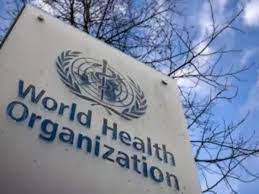WHO to identify viruses that could cause future pandemics. Disease X is on priority list.

WHO updates a pandemic list that directs global research and development (R&D), and investment, particularly in vaccines, tests, and treatments, is the goal.
The World Health Organization announced on Monday that it was developing a fresh list of priority pathogens that should be closely monitored because they run the risk of causing pandemics or outbreaks.
Over 300 scientists are gathering as part of that procedure, which got underway on Friday, to review data on more than 25 virus families and bacterial species.
They will also take into account the alleged “Disease X” — an unidentified pathogen that has the potential to start a serious global epidemic.
According to WHO emergency director Michael Ryan, “Targeting priority pathogens and also virus families for research and also development of countermeasures is essential for a fast and also effective epidemic and pandemic response.”
Prior to the Covid-19 pandemic, “significant R&D investments made it possible to develop safe and effective vaccines in record time.”
The listing was initially released in 2017.
Covid-19, Ebola virus disease, Marburg virus disease, then Lassa fever, Middle East respiratory syndrome (MERS), severe acute respiratory syndrome (SARS), Nipah, Zika, and Disease X are currently included in this group.
Experts will identify knowledge gaps and research priorities for each priority pathogen. Then, specifications for desired vaccines, treatments, and diagnostic procedures can be created.
Additionally, efforts are made to facilitate clinical trials for the development of such tools, and measures to improve regulatory and ethical oversight are also taken into consideration.

Before April 2023, the updated list is anticipated to be released.
Pandemic agreement
The WHO is getting ready for the next round of negotiations on a pandemic treaty as the pathogen threat sessions take place.
A global agreement that could eventually govern how nations prepare for and respond to pandemic threats is being paved by an intergovernmental negotiating body.
A third meeting to draft and also negotiate a WHO convention or other type of international agreement on pandemic preparedness and response is scheduled for December 5–7 in Geneva.
The WHO member states will receive a progress report this year, and the final product will be made available for their review in 2024.
Last week, a first draft of the meeting’s text surfaced.
The draft, despite having some positive aspects, according to the Panel for a main Global Public Health Convention, an independent coalition of statespeople and health leaders, did not go far enough.
In order to prevent negative outcomes when an outbreak emerges, the panel stated on Monday that more needs to be done to establish accountability and precise timelines for alert and response.
The panel stated in a statement that “once an outbreak is detected, there are often a very few critical hours to report, assess, and also act to stop the spread of a disease before it becomes essentially unstoppable.”
According to the statement, “the current draft does not go too far enough to call out the immediate urgency needed to either prepare for the disease X or known pathogens, or to respond at the early stage.”
We’ve seen the harmful effects of inaction at the outset, from December 2019 when new information about the new coronavirus was also suppressed to many countries taking a “wait and see” approach when all Covid-19 cases were first reported.
A universal flu vaccine could thwart a pandemic in the future.
Researchers claim to have made progress in developing a vaccine that will protect against all 20 types of influenza.
The successful Covid vaccines employ the same messenger-ribonucleic acid (mRNA) technology.
The current annual flu shot is updated to ensure the best match for the strain that is currently circulating, but it is likely that it will not protect against new pandemic types.
In tests on ferrets and mice, the new vaccine produced high levels of antibodies that could combat a variety of diseases.
The antigens it contains can teach the immune system how to fight them and, ideally, any new strain that could spark a pandemic, the researchers write in the journal Science. These antigens are safe copies of recognisable bits from all 20 known subtypes of influenza A and B viruses.
The goal of the research, according to Dr. Scott Hensley of the University of Pennsylvania and one of the scientists behind it, is to develop a vaccine that will provide people with a baseline level of immune memory to various flu strains.
When the next flu pandemic strikes, there will be significantly fewer illnesses and fatalities.
“Highly promising”
The 2009 swine flu pandemic, which was brought on by a virus that infected humans after jumping species, was not as bad as first thought.
However, it’s estimated that the 1918 Spanish flu pandemic killed tens of millions of people.
Adolfo Garca-Sastre, director of the Mount Sinai Hospital’s Institute for Global Health and Emerging Pathogens, stated: “Present influenza vaccines do not protect against influenza viruses with pandemic potential.
If this vaccine is successful in people, it will accomplish this. Preclinical research is being done in experimental models.
“They are very promising, but we cannot be sure until clinical trials in volunteers are completed,” the author says, “even though they suggest a great protective capacity against all subtypes of influenza viruses.”
“All of this also implies the potential for an easily and quickly developed universal vaccine that could be of great assistance in the event of a great pandemic outbreak of a novel influenza virus,” said Estanislao Nistal, a virologist at San Pablo University. According to a study, early tests of an experimental mRNA-based vaccine against all 20 recognized subtypes of the influenza virus showed widespread protection from flu strains that would normally be fatal.
The researchers from the University of Pennsylvania in the United States suggested that this also might one day be used as a general preventative measure against upcoming flu pandemics.
The study found that even when the animals were exposed to flu strains different from those used in the vaccine production, the vaccine significantly reduced symptoms and protected against death.
The “multivalent” vaccine was developed using the same messenger ribonucleic acid (mRNA) technology as the SARS-CoV-2 vaccines produced by Pfizer and Moderna, according to a study that was also published in the journal Science.
The study stated that Penn was the originator of the mRNA technology that made it possible for those COVID-19 vaccines.

According to study senior author Scott Hensley, “the idea here is to have a vaccine that will also give people a baseline level of great immune memory to diverse flu strains, so that there will be much less disease and also death when the next flu pandemic occurs.”
Periodically, influenza viruses cause pandemics with high mortality rates. The most well-known of these was the “Spanish flu” pandemic of 1918–19, which claimed the lives of at least tens of millions of people around the world.
Pandemics can begin when one of these strains of flu virus jumps to humans and picks up mutations that make it better suited for spreading among humans. Flu viruses can circulate in birds, pigs, and other animals.
The “seasonal” flu vaccines available today only provide protection against strains that have recently been circulating; they do not, therefore, provide protection against the novel, pandemic strains.
According to the study, the Penn researchers’ approach is to vaccinate using immunogens from every known influenza subtype in order to produce broad immunity. Immunogens are a type of antigen that stimulates immune responses.
It is not anticipated that the vaccine will deliver “sterilizing” immunity that completely shields against viral infections. The new study instead demonstrated that the vaccine elicited a memory immune response that can be quickly recalled and tailored to new pandemic viral strains, significantly lowering severe illness and infection-related death.
It would be similar to the first-generation SARS-CoV-2 mRNA vaccines, which were made to protect against the coronavirus’s original Wuhan strain.
Although the original vaccines did not completely prevent viral infections against later variants like Omicron, Hensley noted that they still offer reliable protection against fatal illness.
When administered and absorbed by recipients’ cells, the experimental vaccine began producing copies of the hemagglutinin protein, a crucial component of all 20 influenza hemagglutinin subtypes—H1 through H18 for influenza A viruses and also two more for influenza B viruses.
Immunizing against all of these subtypes would be extremely difficult with a conventional vaccine, but Hensley claimed that mRNA technology makes it relatively simple.
The mRNA vaccine strongly responded to all 20 flu subtypes in mice and produced high levels of antibodies that persisted at elevated levels for at least four months. Furthermore, the vaccine appeared to be relatively unaffected by previous exposures to the influenza virus, which can alter immune reactions to conventional influenza vaccines.
Whether or not the mice had previously been exposed to the flu virus, the researchers saw a strong and widespread antibody response in the mice.

Hensley and his colleagues are now planning clinical trials for people, he claimed. The vaccine may be helpful for inducing long-term immune memory against all influenza subtypes in people of all age groups, including young children, if those trials are successful, according to the researchers.
We believe that this vaccine may significantly lower the likelihood of ever contracting a severe case of the flu.
He continued by saying that coronaviruses and other viruses with the potential to spread a pandemic could theoretically use the same multivalent mRNA strategy.
Edited by Prakriti Arora





